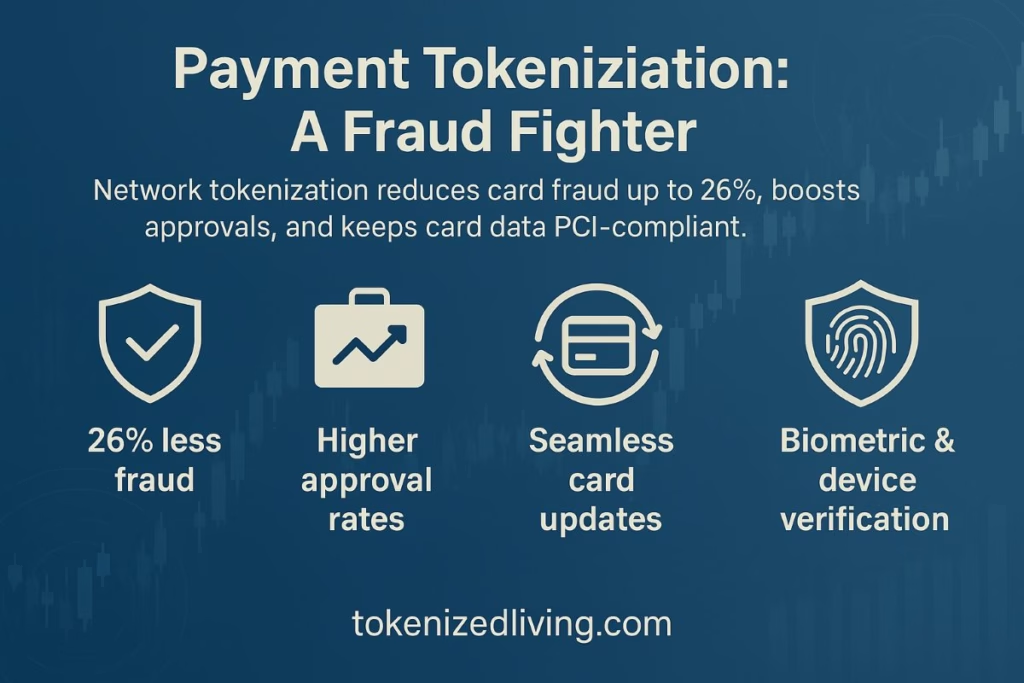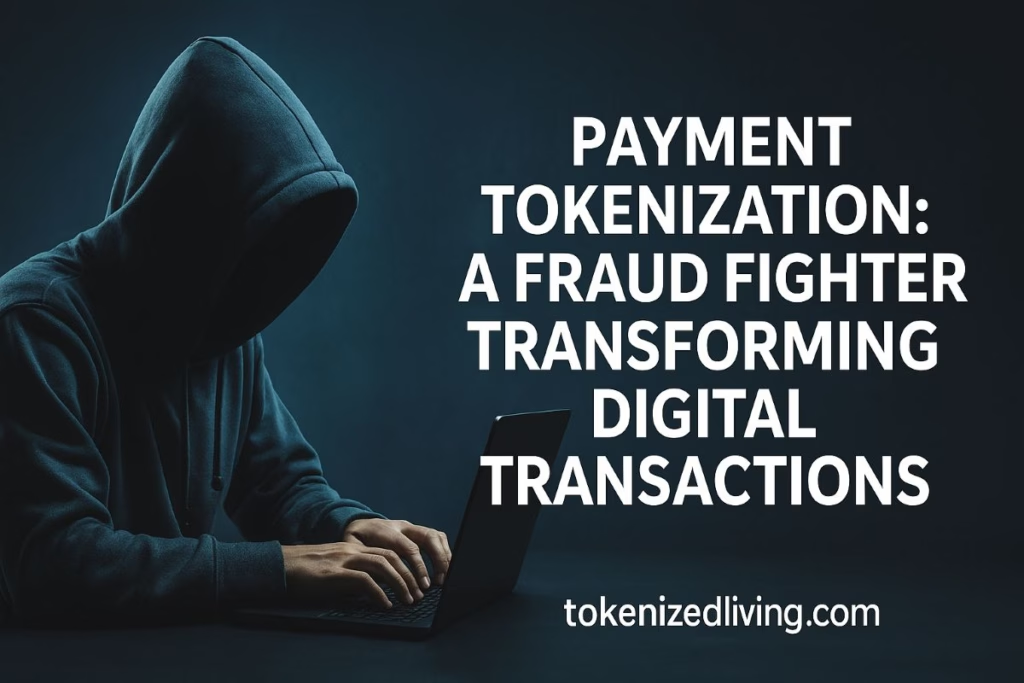Payment tokenization—especially network‑level tokens issued by card networks—slashes fraud by up to 30%, boosts authorization rates 3–5%, greatly reduces PCI compliance burdens, and enables seamless credential updates. Paired with biometric verification, it’s reshaping digital retail security and checkout experience.
“Tokenization replaces static payment accounts with dynamic, encrypted tokens—drastically reducing fraud and false declines while improving customer checkout success.”
— Stu Dwyer, Director of Global Payments, Fiserv
🔐 Why Payment Tokenization Matters: Deep Dive
1. Fraud Reduction & Approval Gains
Network payment tokenization assigns encrypted, merchant-specific tokens in place of card numbers (PANs). If intercepted, tokens are immediately useless. Industry leaders report fraud reduction between 25–30% for online transactions, while authorization rates rise by 3–5% due to fewer failed card‑on‑file scenarios and expired credentials.
2. PCI Compliance Made Simpler
Without customers’ PANs stored on merchant servers, PCI-DSS scope shrinks dramatically. This not only cuts audit costs but also diminishes breach liability. Tokens isolate sensitive data within network vaults, not in merchant databases.
3. Live Credential Updates
When consumers receive a new card, their tokens auto-update. This means a subscription merchant never sees a failed payment due to a changed card—improving retention and reducing churn.
4. Biometric-Enhanced Verification
Tokenization works hand-in-hand with device-linked biometric authentication (e.g. fingerprint or facial recognition) to verify identity securely. This dual layer protects against fraudulent attempts while offering frictionless checkout.
5. Ecosystem Integration & Future Readiness
Network tokens are universally accepted across merchants, digital wallets, recurring payment platforms, and loyalty apps. As payment networks adopt Click‑to‑Pay and wallet protocols, tokens future-proof merchants for emerging standards.

⚠️ Real-World Challenges & Considerations
- Technical barriers: Smaller merchants or legacy systems may delay rollout due to integration complexity.
- Biometric adoption: Consumer confidence in device-level biometrics varies by region and jurisdiction.
- Global regulation inconsistencies: Token standards and compliance expectations still differ across markets.
🧠 Final Thoughts on Payment Tokenization
Payment tokenization is more than just a fraud shield—it’s a strategic upgrade for retail and recurring commerce ecosystems. With reduced breaches, smoother experience flows, and powerful identity orchestration, merchants turning to tokenization stay ahead of emerging payment standards.
❓ FAQs: Simplifying Payment Tokenization
It replaces real card numbers with encrypted, merchant-specific tokens issued and managed at the card network level.
Fraud decreases up to 30%, and authorization rates improve by around 4%, reducing lost orders and chargebacks.
It doesn’t eliminate them entirely—but it significantly reduces compliance burden by eliminating card storage on merchant systems.
They auto-sync with card issuers when a customer gets a replacement or renewed card—requiring no merchant intervention.
Biometrics verify the cardholder’s identity on the device, adding a secure layer that pairs with token-based payments.
Subscription platforms, large retailers, digital wallets, and any business that stores cards on file benefit from reduced fraud and improved retention.
We use AI tools to enhance research and drafting, always under human supervision.

